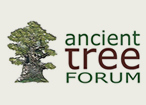Introduction
The purpose of this page is to provide simple guidance on the basic elements of the law as it affects trees. We are often asked about the ins and outs of having work done to trees. The advice given in this page is for guidance only. It must not be used as a substitute for professional legal advice. Your legal situation will depend on the individual facts of your case and you should always consult your legal advisor if you are in any doubt. The Citizens Advice Bureau website may also be useful.
Owner's rights and responsibilities
A tree is usually yours if its trunk grows on land you own. Trees growing exactly on a boundary are usually the joint property of the two owners. If you are a tenant, your tenancy agreement should list rights and duties in relation to any trees on your property. If you are a Council tenant, contact your Area Housing Officer regarding any problem you may have with trees.
Inspections
Landowners are responsible for all trees within the boundary of their property. They have a duty to maintain the trees in a safe condition. To discharge this duty an owner must ensure the trees are inspected regularly for any signs that they are unsafe. The importance of regular, detailed inspections is to minimise the likelihood of damage or injury occurring if the tree or parts of it were to fall. If the risk is high, e.g. a large old tree next to a road, the importance is much greater. An owner without specialist knowledge would be expected to employ a suitably experienced and qualified arboriculturalist/tree surgeon to inspect them every 1 to 3 years depending on the degree of risk.
Overhanging branches
If trees overhang a boundary they can cause problems. However, if you are on the receiving end of this you are usually entitled to remove the overhang, so long as it does not damage the rest of the tree. You have to return the material to the owner so as to avoid being charged with theft. We have seen this being the makings of a neighbour dispute so an amicable agreement is by far the best way to approach it. Before you set to on an overhanging tree or hedge, it would be a very good idea to do the following:
- Contact the owner and make sure they know you are going to do the work. It will almost always be easier if you can co-operate with them.
- If the works are anything more than minor works then you should consider employing a competent person to do the work for you. Don't risk killing the tree and facing a claim for compensation. Get the contractor to write down, preferably on headed paper, a clear description of exactly what he is going to do and what its effect will be. This is especially important if you think the neighbour might accuse you of deliberately trying to damage the tree/hedge or kill it. If you can show that you used a qualified professional this will be a good defence against such accusations.
- Make sure you know exactly where your boundary is, and do not go over it at all or do anything to any tree or hedge beyond it unless your neighbour has said you may. If there is any dispute between you and your neighbour about the exact location of your boundary you should definitely seek legal advice before you proceed. Otherwise you risk prejudicing any future action against your neighbour to establish the boundary itself.
- If the offending tree is interfering with the fabric of your buildings or other structures, contact your insurers and ask their advice before going any further. They might be able to do the negotiations for you which would be a very good thing from your point of view.
- Be sure that the tree is not protected by a TPO or planning conditions, or is in a Conservation Area (see below). This is your responsibility regardless of who owns it or even if you don't know who owns it. If any of these are true you must apply for consent (or notify them of your intention 6 weeks beforehand if in a conservation area) from your local planning authority before doing any work.
Tree Preservation Orders (TPOs)
TPOs are made under the Town and Country Planning Act 1990 in respect of trees which are of particular amenity value. A copy of the order is served on the owner of the tree and other people affected by the trees e.g. adjoining landowners. It is an offence to damage, cut down or prune any tree that is subject to a TPO without the written consent of the District Council. A written application must be made to the Council detailing the exact nature of work required. The Council's Countryside/Landscape or Tree Officer will usually visit the site to decide if the works are appropriate. Applications must propose work which is in accordance with good arboricultural practice.
Every local authority in England now uses a standardised application form for planning applications. This form is known as "1 App" and can be downloaded from the Council web site or from the 'Planning Portal' system www.planningportal.gov.uk
Town & Country Trees are able to submit applications for works on behalf of our clients and where appropriate write reports in support of the application.
Conservation Areas
Trees in Conservation Areas over 75mm in diameter measured 1.5 metres above the ground are also protected and it is an offence to damage, cut down or prune such trees without giving written notice of the intended works to the District Council. The law requires owners to give six weeks written notice during which time the work cannot be carried out. If the Council are unable to consent to the work specified in the notice it must make a Tree Preservation Order to protect the tree.
Every local authority in England is using a standardised application form for planning applications. This form is known as "1 App". This is a web based system hosted by the 'Planning Portal' www.planningportal.gov.uk .The form can also be downloaded from the Council web site.
As part of our service Town & Country Trees submit notices for works on behalf of our clients and where appropriate write reports in support of the application.
Dangerous trees
In the case of both TPO's and Conservation Areas there are exemptions to the need to make a prior application if the tree is imminently dangerous. In these cases work to make the tree safe may be carried out immediately. You should contact the District Council by telephone before you do the work. Any work must be limited to that required to remove the immediate danger. The burden of proof is on the tree owner and the person doing the work to prove that it was necessary for urgent safety reasons. This can be very difficult after the event and professional arboricultural advice should be taken before carrying out any urgent works. It would also help if photographs were taken of the tree and the defects which create the need for the emergency work. If an applicant disagrees with the decision of the Council in respect of an application to carry out work to protected trees, they have a right of appeal to the Secretary of State for the Environment. Work which is not exempt and is carried out without formal notification or within the six week period without the written consent of the Council is illegal.
The Local Authority may prosecute offenders and fines of up to £20,000 for each tree may be imposed by the Magistrates Court in the event of offenders being convicted of an offence. If proceedings are instituted in the Crown Court fines are unlimited. There is a duty to replace any tree removed without permission.
*Note. The existence of a Tree Preservation Order does not alter the owner's responsibility to ensure his/her trees are safe and managed in accordance with good arboricultural practice.
Felling Licences
Felling Licences, administered by the Forestry Authority, also control tree felling. If an owner wishes to cut down more than 5 cubic metres of timber (about 5 mature woodland trees depending on size) they must obtain written permission from the Forestry Authority.
Trees obstructing the highway
The Highways Act 1980 requires that trees and other vegetation do not obstruct the passage of users. The Highway Authority requires a minimum clearance over any part of a footpath of 2.4 metres and over any part of a road of 5.2 metres. The Highway Authority (County Councils) has the powers to enforce these clearances. If the tree is protected by a Tree Preservation Order (TPO) or growing in a Conservation Area you should consult the District Council before carrying out any work.
Planting of trees
Generally trees can be planted anywhere on a property and there is no requirement for trees or hedges to be set back a certain distance from the boundary. However restrictions may exist through other controls such as covenants or planning controls. It is worth considering how high a tree will grow and what it's affect on the surrounding properties bearing in mind the owners liability, see above.
Height of trees
There is no maximum height beyond which tree owners must not allow their trees or hedges to grow. They can be as tall as the owner wishes provided they do not cause damage to adjoining property unless restrictions are imposed through other controls such as covenants or planning conditions.
Damage by trees
Only if a tree causes actual damage to an adjoining property can the neighbour take any action in law. Actual damage could include branches breaking gutters or dislodging roof tiles and roots causing subsidence to a building. In all cases proof would be required for an action to succeed.
The right to light
The "right to light" is often quoted in relation to trees cutting out light to adjacent property. Whilst there is an established right in the case of new buildings obstructing light there is no clear precedent that trees cutting out light can infringe a person's "right to light".











